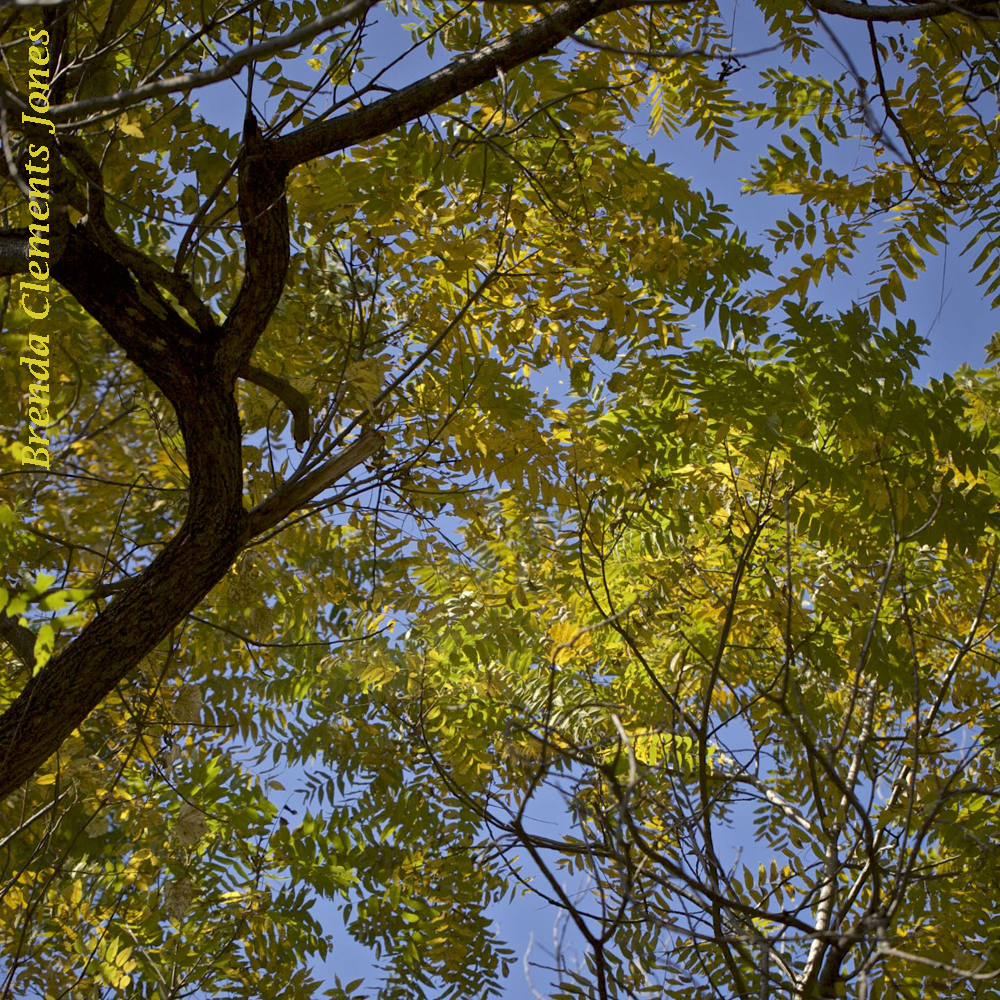
Looking up from beneath a Black Walnut (Juglans nigra) reveals a splendid, captivating pattern against the sky. Now that pattern has an added element, a change in color. Each leaflet of every compound leaf is changing little by little. Emerald to chartreuse green to chartreuse yellow and everything in between.

Black Walnuts dropping everywhere staining hands that remove the outer husks. My Mom tells us of a time when as a child, she and her sister, my Aunt Kay, helped my Grandpa remove husks from Black Walnuts. Though they thoroughly washed their hands the stain remained. The next day at school my Mom got a failing grade in penmanship because of her stained hands. I guess that teacher didn’t know of the staining qualities of Black Walnuts.

Several times a week I see these Black Walnut trees outside the yoga studio where I am a student. Absolutely nothing growing beneath them but grass. This is because of allelopathy. Allelopathy is one plant limiting the growth of another through harmful chemicals. In the Black Walnut tree the chemical is juglone, which is found in the roots, buds, leaves and nuts. Some plants will not do well with exposure to juglone, other plants it does not phase.

During the winter one is left with little in the way of clues to identify a tree. One thing I depend on is the bark. Sometimes that works. Black Walnut’s bark is gray-brown and is the color of chocolate if cut. It has somewhat deep channels with ridges that often create diamond shaped motifs across the bark.

Soon all the color changes will have taken place. Patterns against the sky will be gone. Leaves will be on the ground, as leaf litter, becoming homes for various stages of insects to overwinter. And that bark will tell me the name of the tree.
